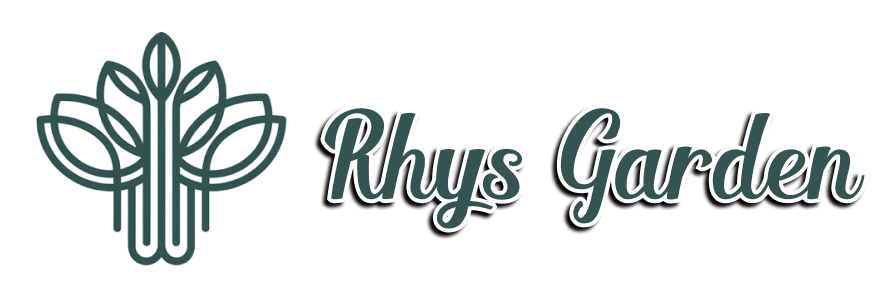Mounding perennials are a popular choice among gardeners for their ability to create lush, rounded shapes that add texture and interest to any garden. Rhys Garden has found that understanding what mounding perennials are and how to incorporate them into your landscape can transform your garden’s appearance. In this guide, I’ll explore the characteristics of mounding perennials and provide tips on selecting the right varieties for your garden.
What is a Mounding Perennial?
Mounding perennials are a type of herbaceous plant that grows in a rounded, cushion-like shape. These plants return year after year, forming dense clumps or mounds of foliage and flowers. Their unique growth habit makes them invaluable in garden design, providing structure, texture, and often season-long interest.
Characteristics of Mounding Perennials
- Growth Pattern: As the name suggests, these plants grow outward and upward in a mound shape.
- Longevity: Being perennials, they live for more than two years, often coming back stronger each season.
- Low Maintenance: Many mounding perennials require minimal care once established.
- Versatility: They can be used in various garden settings, from borders to rock gardens.
Popular Mounding Perennials for Your Garden
Let’s explore some beloved mounding perennials that can add charm and character to your outdoor space:
Coral Bells (Heuchera)
Coral bells are prized for their colorful foliage, which can range from deep burgundy to lime green. They form neat mounds that look great in containers or as edging plants.
Dianthus (Pinks)
With their fragrant flowers and blue-green foliage, dianthus creates charming mounds that are perfect for rock gardens or the front of borders.
Lamb’s Ear (Stachys byzantina)
Known for its soft, velvety leaves, lamb’s ear forms attractive silvery mounds that add texture to any garden.
Geranium (Cranesbill)
Hardy geraniums create spreading mounds covered in delicate flowers throughout the summer, making them excellent ground covers.
Hosta
While primarily grown for their foliage, hostas form beautiful mounds in shady areas, with some varieties also producing lovely flowers.
Benefits of Incorporating Mounding Perennials in Your Landscape
Mounding perennials offer numerous advantages to gardeners:
- Visual Interest: Their rounded shape provides a pleasing contrast to upright or trailing plants.
- Weed Suppression: Dense growth habits help prevent weeds from establishing.
- Erosion Control: Mounding perennials can help stabilize soil on slopes.
- Wildlife Attraction: Many species attract pollinators like bees and butterflies.
- Year-Round Appeal: Some mounding perennials maintain their shape even in winter, adding structure to the garden.
How to Care for Mounding Perennials
Proper care ensures your mounding perennials thrive year after year:
Planting
- Choose the right location based on the plant’s light requirements.
- Prepare the soil by adding organic matter for good drainage.
- Space plants according to their mature size to prevent overcrowding.
Watering
- Water deeply but infrequently to encourage deep root growth.
- Use mulch to retain moisture and suppress weeds.
Fertilizing
- Apply a balanced, slow-release fertilizer in spring.
- Avoid over-fertilizing, which can lead to excessive foliage growth at the expense of flowers.
Pruning and Maintenance
- Remove dead or yellowing leaves to maintain appearance.
- Divide overcrowded plants every few years to maintain vigor.
- Cut back spent flowers to encourage reblooming in some species.
Designing with Mounding Perennials

Mounding perennials are versatile design elements in any garden:
As Border Plants
Use low-growing mounding perennials at the front of borders to create a tidy edge.
In Rock Gardens
Mounding perennials are perfect for filling spaces between rocks, softening hard edges.
As Groundcover
Use spreading mounding perennials to cover large areas with attractive foliage and flowers.
In Containers
Many mounding perennials work well in pots, providing long-lasting color and texture.
As Accent Plants
Use larger mounding perennials as focal points in garden beds or mixed borders.
Combining Mounding Perennials with Other Plants
To create a harmonious garden design, consider pairing mounding perennials with:
- Tall, upright plants for height contrast
- Trailing plants for a cascading effect
- Ornamental grasses for texture variation
- Shrubs for structural balance
Seasonal Interest with Mounding Perennials
One of the great advantages of mounding perennials is their ability to provide interest throughout the seasons:
Spring
Many mounding perennials, like candytuft (Iberis sempervirens), burst into bloom in spring, heralding the start of the growing season.
Summer
Plants like coreopsis and gaillardia offer vibrant summer color, while foliage plants like heuchera maintain their attractive mounds.
Fall
Some mounding perennials, such as autumn joy sedum, come into their own in fall with stunning flower displays.
Winter
Even in dormancy, many mounding perennials maintain their shape, providing structure to the winter garden.
Troubleshooting Common Issues with Mounding Perennials
Like all plants, mounding perennials can face challenges. Here’s how to address common problems:
Overwatering
Symptom: Yellowing leaves, root rot
Solution: Ensure good drainage and water only when the top inch of soil is dry
Pest Infestations
Symptom: Holes in leaves, distorted growth
Solution: Identify the pest and use appropriate organic controls
Fungal Diseases
Symptom: Spots on leaves, wilting
Solution: Improve air circulation, avoid overhead watering
Loss of Shape
Symptom: Plant becomes leggy or sparse in the center
Solution: Divide and replant, or prune to encourage compact growth
Eco-Friendly Gardening with Mounding Perennials
Mounding perennials can play a crucial role in sustainable gardening practices:
- Water Conservation: Many species are drought-tolerant once established.
- Biodiversity: They provide food and habitat for beneficial insects and birds.
- Soil Health: Their root systems help improve soil structure over time.
- Reduced Chemical Use: Many mounding perennials are naturally pest-resistant.
Frequently Asked Questions about Mounding Perennials
Q1: Are all mounding perennials evergreen?
A: No, while some mounding perennials are evergreen, many are deciduous, losing their leaves in winter but returning in spring.
Q2: Can mounding perennials be grown from seed?
A: Yes, many mounding perennials can be grown from seed, although it may take longer to establish a mature plant compared to starting with nursery stock.
Q3: How often should I divide my mounding perennials?
A: It depends on the species, but generally, every 3-5 years is a good rule of thumb. Divide when plants become overcrowded or less vigorous.
Q4: Can mounding perennials be used in xeriscaping?
A: Absolutely! Many mounding perennials are drought-tolerant and work well in water-wise landscaping designs.
Q5: Are there mounding perennials suitable for shade?
A: Yes, plants like hostas, heucheras, and certain ferns form attractive mounds in shady conditions.
Conclusion
Mounding perennials are an excellent addition to any garden, offering year-round interest and versatility in landscape design. By selecting the right mounding perennials for your specific conditions and understanding how to care for them, you can create a beautiful, low-maintenance garden that thrives season after season. With these plants, your garden can achieve a natural, harmonious look that enhances its overall appeal.

Related Posts
Enchanting Gazing Ball Garden Ideas: Transform Your Outdoor Space
The Ultimate Guide to Palm Tree Pruning Cost
The Ultimate Guide to Raised Garden Beds Against Fences